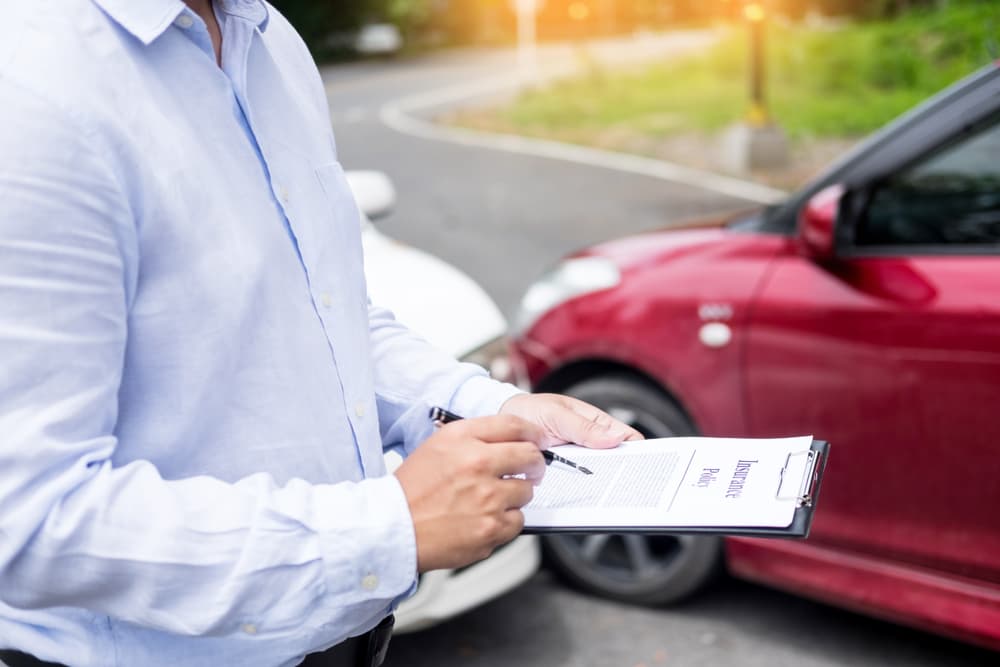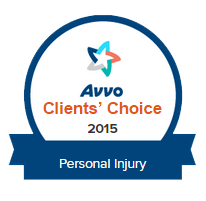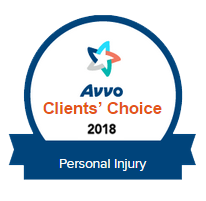Turning to your insurance policy for support is natural when you're involved in a car accident. But what happens if the costs related to the accident exceed the limits of your insurance coverage? This situation can be challenging, but understanding your options is the first step towards finding a solution. Consult an experienced car accident attorney for expert guidance. Knowing your insurance and options is crucial in managing these situations effectively.
Schedule a Free Initial Consultation Today!
Understanding Insurance Limits
Comprehending your car insurance policy limits enables readiness for unexpected road events. Essentially, these limits are the maximum amount your insurance company is willing to pay in the event of an accident.
The Basics of Insurance Limits
When you purchase a car insurance policy, you choose certain limits for coverage.
Generally, three main categories divide these limits.

- Bodily Injury Liability Per Person: This is the maximum amount the insurance will pay for a single individual's injuries in an accident you cause.
- Bodily Injury Liability Per Accident: This is the total amount the insurance will pay for all injuries you cause in an accident.
- Property Damage Liability: This covers damage to someone else's property, such as their car, fence, or building, in an accident you are responsible for.
Insurers often express these limits in a format like 50/100/50, which, for example, means $50,000 for bodily injury per person, $100,000 for bodily injury per accident, and $50,000 for property damage.
Understanding Policy Caps
The limits you choose reflect a balance between how much coverage you want and what you can afford in terms of premiums. Higher limits provide more protection but come at a higher cost.
When a claim reaches these limits, any remaining costs fall on you. This can be particularly expensive in serious accidents where medical or repair costs quickly escalate.
The Importance of Adequate Coverage
Given the potential for accidents to exceed your policy limits, selecting a coverage level that meets legal requirements and aligns with your personal risk tolerance and financial situation is wise.
Many professionals recommend higher liability limits if you can afford them, as they provide greater financial protection.
Considering State Minimums
Each state sets its minimum insurance requirements, often quite low, and may not provide sufficient coverage in a serious accident. Relying solely on state minimums can leave you exposed to significant financial risk.
Evaluating Your Needs
When deciding on your insurance limits, consider factors like your driving habits, the value of your assets, and your overall risk exposure. If you have substantial assets, you may be more at risk in a lawsuit following an accident, making higher limits a wise choice.
Understanding Underinsured and Uninsured Motorist Coverage
Uninsured Motorist (UM), the coverage intends to protect you if you're part of an accident with a driver without car insurance.
Despite legal requirements, some drivers unfortunately still operate vehicles without insurance. If you are in an accident caused by such a driver, UM coverage steps in to cover costs that the at-fault driver's insurance will typically cover.
This coverage typically includes two components:
- Uninsured Motorist Bodily Injury (UMBI): This covers medical expenses, lost wages, and other damages for you and your passengers if injured in an accident caused by an uninsured driver.
- Uninsured Motorist Property Damage (UMPD): This covers repairing or replacing your vehicle and other property damages caused by an uninsured driver.
What is Underinsured Motorist Coverage?
Underinsured Motorist (UIM) coverage is similar to UM coverage. Still, it applies when the at-fault driver has insurance but whose policy limits are too low to cover all your damages. In such cases, UIM coverage can make up the difference up to the limits of your policy.
For example, if your medical bills and car repair costs total $100,000, but the at-fault driver's insurance only covers up to $50,000, your UIM coverage can potentially cover the remaining $50,000, depending on your policy limits.
Why Are These Coverages Important?
The primary importance of UM/UIM coverage lies in its ability to provide financial protection in situations beyond your control.
Accidents with uninsured or underinsured drivers can leave you facing significant out-of-pocket expenses. UM/UIM coverage is a security blanket, ensuring you are not left financially vulnerable due to another driver's irresponsibility or lack of adequate coverage.
State Requirements and Coverage Limits
The requirements for UM/UIM coverage vary by state. Some states require all drivers to have UM/UIM coverage as part of their standard auto insurance policy, while in others, it's optional.
Consider your circumstances and risk tolerance when setting your coverage limits. A good rule of thumb is to have UM/UIM limits that match your standard liability coverage limits.
How UM/UIM Coverage Works in an Accident
In the event of an accident with an uninsured or underinsured driver, you will first file a claim with the at-fault driver's insurance (if available).
You will file a claim under your UM/UIM coverage if their coverage is insufficient or non-existent. UM/UIM coverage typically requires you to prove the other driver's fault, and your insurance company will need to agree that the other driver was underinsured or uninsured.
Combining UM/UIM With Other Coverages
You can effectively combine UM/UIM coverage with other types of car insurance. For instance, in some states, collision coverage can help repair your vehicle regardless of who is at fault, and personal injury protection (PIP) can cover medical expenses. Together, these coverages provide a comprehensive safety net.
What Happens After a Car Accident When the Costs Exceed My Insurance Limits?
After a car accident, when the costs exceed your insurance limits, you'll likely have many questions and uncertainties. In some cases, you or the other party involved in the accident may have additional insurance policies.
An umbrella policy is a common example, providing extra coverage beyond the usual car insurance limits. This additional layer of protection can cover the excess costs that your standard policy doesn't cover.
Negotiations and Settlements
Parties involved and insurance companies often negotiate when insurance limits go beyond. A lawyer can represent you during these negotiations to settle. A settlement is an agreement to resolve the issue without going to court, which can benefit all involved. It often involves finding a balance where the financial impacts are manageable, potentially avoiding more extensive legal proceedings.
Legal Assistance
In instances where the costs significantly surpass the insurance limits, you'll need to seek legal advice. A lawyer can explain your rights and present all available options. A lawyer can find the best possible outcome by negotiating with insurance companies or representing you in legal proceedings.
Preventative Steps
To protect yourself from such situations, consider these steps:
Review Your Coverage

Regularly review your insurance policy to ensure it aligns with your current needs and lifestyle. Over time, your circumstances can change – perhaps you've bought a new car, moved to a different state, or experienced a change in your driving habits.
These factors can influence the type and amount of coverage you need. For instance, you might require more comprehensive coverage if you've recently purchased a new vehicle. Regular reviews, ideally annually or after any major life event, can assist in maintaining adequate protection and preventing underinsurance in case of an accident.
Consider Additional Coverage
Investigating additional policies like umbrella insurance is smart, especially if your current coverage might not suffice in more serious incidents. Your standard liability limits reach a point where umbrella insurance activates, offering extra financial protection. This type of coverage is particularly beneficial if you have assets at risk in a lawsuit following an accident.
It's not just for the wealthy; anyone can face damages that exceed their primary insurance limits. Umbrella insurance is a relatively inexpensive way to ensure peace of mind, protecting you from the potentially devastating financial consequences of a major accident.
Understand Policy Details
Understanding the specifics of your insurance policy is not just about the overall coverage limit; it's also about understanding what is and isn't covered. For example, some policies might include uninsured motorist coverage, which you can use if you're in an accident with a driver with insufficient insurance.
Know the details of your deductibles, coverage for medical expenses, and property damage limits. This knowledge empowers you to make informed decisions, especially when you might need to rely on your insurance.
Plan for the Worst-Case Scenario
While no one likes to think about being involved in a severe accident, planning for such an eventuality is a practical step. This requires having sufficient insurance coverage and readiness for the possible aftermath. It includes understanding the process of filing a claim, knowing your rights and responsibilities after an accident, and knowing how an insurance company assesses and handles claims. Preparing for the worst can alleviate some of the stress of a serious accident.
Seek Professional Advice
Finally, don't hesitate to seek professional advice regarding understanding and choosing your car insurance. Insurance agents and legal professionals can provide valuable insights into the best coverage for your situation. They can help clarify confusing terms and conditions and guide you in making decisions that enhance your protection on the road.
By taking these proactive steps, you can ensure that your car insurance coverage adequately protects you, your vehicle, and your financial well-being in the event of an accident. Remember, insurance is more than just a legal requirement; it's a huge component of your financial security.
Tips for Choosing the Right Insurance Policy
Selecting the right car insurance policy is a decision that can significantly impact your financial security and peace of mind on the road. It's about balancing adequate coverage and affordable premiums tailored to your unique needs and circumstances. Here are some key tips for choosing a policy that best suits you.
Assess Your Coverage Needs
Before diving into policy options, assessing your individual coverage needs is important. Consider factors like your driving habits, the value of your car, your financial situation, and the level of risk you're comfortable with. For instance, if you drive frequently in high-traffic areas, you might want more comprehensive coverage.
Understand Different Types of Coverage
Familiarize yourself with the coverage available:
- Liability Insurance: This covers damages you cause to others but does not cover your car or injuries.
- Collision Coverage: Pays for damage to your car from a collision, regardless of who is at fault.
- Comprehensive Coverage: Covers non-collision-related damage to your car, such as theft or natural disasters.
- Personal Injury Protection (PIP): Helps with medical expenses regardless of who's at fault.
- Uninsured/Underinsured Motorist Protection: Covers you when involved in an accident with someone who lacks sufficient insurance.
Determine the Right Deductible
Your deductible is paid out of pocket before your insurance kicks in. A higher deductible generally means lower premiums, but choosing a deductible you can comfortably afford is important. Consider your financial resilience in case of an unexpected accident.
Compare Quotes and Policies
Don't settle for the first quote you receive. Shop around and compare quotes from multiple insurance providers. Pay attention not only to the prices but also to what each policy covers. Sometimes, a slightly higher premium can offer significantly better coverage, which might be worth the extra cost.
Check Insurer's Reputation and Customer Service
Research potential insurers' reputations. Look for customer reviews, ratings, and any reports of complaints. Good customer service and a smooth claims process can be as important as the coverage.
Look for Discounts
Many insurance companies offer discounts that can lower your premiums. These might include discounts for safe driving, having multiple policies with the same company, or installing safety devices in your car. Always ask potential insurers about available discounts.
Read the Fine Print
Before finalizing your policy, read all the terms and conditions carefully. Understand the exclusions, limits, and conditions the policy operates under. This will help avoid surprises when you need to make a claim. A lawyer can assist if reviewing the fine print alone makes you uncomfortable.
Regularly Review and Update Your Policy
Your insurance needs might change over time due to aging vehicles, changes in personal finances, or life events. Regularly review your policy to ensure it meets your needs and make adjustments as necessary.
Consider Additional Coverage for Extra Protection
Consider additional coverages like umbrella insurance for broader liability protection if you have significant assets or special circumstances. These additional policies can provide peace of mind in case of major accidents or lawsuits.
Seek Professional Advice
If you're unsure about what coverage is right for you, don't hesitate to seek advice from a lawyer. They can provide personalized recommendations based on your specific situation.
By following these tips, you can make an informed decision in selecting a car insurance policy that provides the right balance of coverage and cost, tailored to your unique needs and lifestyle. Remember, the cheapest policy is not always the best, and understanding your coverage is key to being well-protected on the road.
Contact a Car Accident Lawyer
Exceeding insurance limits after a car accident can be stressful, but you're not alone in this journey. If you're facing this challenge, don't hesitate to contact a personal injury lawyer for guidance and support. Understanding your insurance policy and options can significantly affect how you handle these situations.




























